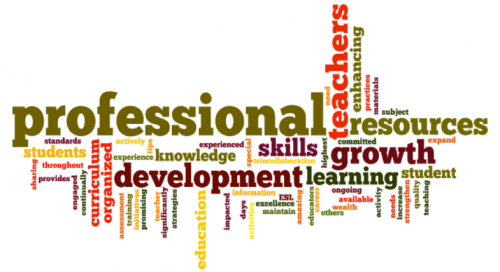 With the cloud of the Corona Virus hanging over us and growing by the hour, it is difficult to see any silver lining. Health and safety are our greatest concerns. The stakes are high and the consequences may be fatal to too many. Anything I discuss here should not in any way diminish the seriousness of our condition. The consequences of our nationwide quarantine however, may be having a profound positive effect on our education system. From an education perspective, there may be a silver lining to one of the darkest clouds to ever cover this country.
With the cloud of the Corona Virus hanging over us and growing by the hour, it is difficult to see any silver lining. Health and safety are our greatest concerns. The stakes are high and the consequences may be fatal to too many. Anything I discuss here should not in any way diminish the seriousness of our condition. The consequences of our nationwide quarantine however, may be having a profound positive effect on our education system. From an education perspective, there may be a silver lining to one of the darkest clouds to ever cover this country.
In the past, many discussions by several education leaders have sometimes suggested the idea of education reform needing to blow up the current education system in order to affect any real change. In March of 2020 in response to a life-threatening pandemic, our education system, as we have known it for centuries, was blown up. Schools across the nation closed their doors, but required their teachers to try to carry on educating their students using online technology. Overnight, discussions, which were in many cases theoretical about online teaching and learning, became a reality. It was a “ready or not, here we come” event.
Educators, who were trained and programmed to teach face-to-face with students in classrooms with a support staff within a larger school building, found themselves alone at home face-to-face with a blank computer screen. This nationwide experience exposed and underscored a number of deficiencies and shortcomings in the system that can now be addressed in many positive ways. How we respond to what we now know may very well evolve the education system in ways not possible before the nationwide lockdown blew it up. From chaos we now have opportunity.
The earliest indications of our preparedness to meet the online challenge to educators underscored the gap that exists in professional development for educators. Teaching online is not the same as teaching in the classroom. Many educators have not been updated in the use of technology and more specifically, online instruction. Of course the system until now was not dependent on online learning, but technology implementation is essential in our computer-driven society. Now that we have exposed the importance of technology in education, we can use this experience to push for more required, universal, and effective professional development. We can also more convincingly support PD with time, money, and structured follow-up.
We are more aware of the basic needs of kids to have a better working knowledge of technology skills. It is an opportunity to evaluate and evolve how we introduce kids to technology and how we incorporate those skills to enhance their learning. We need to develop their ability to be self-reliant in their learning to become lifelong learners.
We are also more aware of the need for a dependable online infrastructure, one that offers access to all. The digital divide must be addressed. Zip codes can no longer be the driving force of quality education.
Social distancing is a new concept for our country. It should be called physical distancing to be a more accurate description. Online we have all gotten closer through connections with colleagues and students. The idea of sharing ideas, and sources has grown as a result of educators needing to quickly grow and communicate effectively online. Another benefit from this collegial connection is a new appreciation, if not discovery for some, of online content. The use of online sources can enhance a text-based curriculum, or even replace it.
In order to change any system the first changes have to be made to the culture. With schools shut down parents have become more involved with their kids’ education. What parents see and experience, with their children learning through technology, goes a long way in educating parents as to what education in today’s world is all about. Of course this does not work as effectively if there are no online connections between educators and students for parents to experience.
Probably the biggest takeaway from this crisis in education is the absolute need for social and emotional learning for kids. We need to address physical and emotional needs before kids can learn. Maslow must always come before Bloom. Priorities need to be readjusted. We see schools adjusting their grading policies. Maybe grades aren’t what we have believed them to be for centuries? It may be time to reassess and adjust. Many schools have cancelled their need to give standardized tests. Again, maybe they need to move down on the list of education priorities. Let’s take the opportunity to talk it through and consider our experiences.
After each and every catastrophic experience this country has endured, it has reassessed, adjusted, and made positive changes for the benefit of all. Beyond the obvious health and safety issues that must be addressed, we need to address the issues of education. The kids who we are educating today will make the decisions of health and safety moving forward. We can’t educate them with the knowledge and skills that brought us to this point. They need more knowledge and more relevant skills to get beyond our limited capabilities. They will be living in a different world. This horrible event that we are now facing has actually given us the greatest opportunity yet to evolve our education system. We need to reassess, reevaluate and prioritize. This opportunity is the silver lining of that very dark Coronavirus cloud hanging over us.
Stay Healthy!
 I recently read a blog post about how teachers will never be replaced by technology. The author stated that technology was just a “tool for learning”. This had to be among literally hundreds, if not thousands, of similar posts and comments that I have read over the years. Since I was teaching from the early 70’s, I tended to agree with that way back then. Today, however, I am not so sure that technology in education hasn’t grown into something beyond a “tool for learning”. I often thought that the support garnered for this idea about a “tool for learning”, from educators was based in their fear from an unfounded belief by Sci-Fi authors who often suggested the replacement of teachers by technology in the future. Sci-Fi doesn’t always get it right. Where are the flying cars?
I recently read a blog post about how teachers will never be replaced by technology. The author stated that technology was just a “tool for learning”. This had to be among literally hundreds, if not thousands, of similar posts and comments that I have read over the years. Since I was teaching from the early 70’s, I tended to agree with that way back then. Today, however, I am not so sure that technology in education hasn’t grown into something beyond a “tool for learning”. I often thought that the support garnered for this idea about a “tool for learning”, from educators was based in their fear from an unfounded belief by Sci-Fi authors who often suggested the replacement of teachers by technology in the future. Sci-Fi doesn’t always get it right. Where are the flying cars? Often in teacher preparation classes students are asked to develop an education philosophy based on their course studies and observations, or student teaching experiences. For many of these students who go on the pursue careers in education, that might be the only time anyone asked for that philosophy. Of course the best time to develop any philosophy on one’s overall impact of a career may not be to do it before one enters and experiences the full force of that career over a period of time. This is a discussion I often had with my student teachers. They should develop an education philosophy, but it should never be etched in granite, especially with their limited teaching experiences. By the nature of the job, changes are to be inevitable, so self-reflection and flexibility are important elements that must be requirements of the profession at any level.
Often in teacher preparation classes students are asked to develop an education philosophy based on their course studies and observations, or student teaching experiences. For many of these students who go on the pursue careers in education, that might be the only time anyone asked for that philosophy. Of course the best time to develop any philosophy on one’s overall impact of a career may not be to do it before one enters and experiences the full force of that career over a period of time. This is a discussion I often had with my student teachers. They should develop an education philosophy, but it should never be etched in granite, especially with their limited teaching experiences. By the nature of the job, changes are to be inevitable, so self-reflection and flexibility are important elements that must be requirements of the profession at any level. It has been quite awhile since I have written a post. I think I might be in a state of depression as a result of my addiction to television News shows and the recent development of an affliction that I refer to as “screen screaming”. Getting beyond the political turn of events of recent history, I also find myself frustrated and depressed over the slow pace of change in education that we have witnessed since the turn of the century. Why is it that so much of what education thought-leaders have been advocating for, in order to dramatically change the education system for the better, has yet to take root in any significant way? Many of the practices that have been identified as stymieing the system are still common practice in too many school systems today.
It has been quite awhile since I have written a post. I think I might be in a state of depression as a result of my addiction to television News shows and the recent development of an affliction that I refer to as “screen screaming”. Getting beyond the political turn of events of recent history, I also find myself frustrated and depressed over the slow pace of change in education that we have witnessed since the turn of the century. Why is it that so much of what education thought-leaders have been advocating for, in order to dramatically change the education system for the better, has yet to take root in any significant way? Many of the practices that have been identified as stymieing the system are still common practice in too many school systems today. n the hands of some of the most educated members of our society who have the greatest effect on future generations has had somewhat mixed results.
n the hands of some of the most educated members of our society who have the greatest effect on future generations has had somewhat mixed results.
 Recently, as I was tweeting about the need for teachers to be more aware of what was going on within their profession an unexpected tweet response came from a connected educator who I greatly respect and hold in high regard. He tweeted that he was tired of the teacher bashing. I was upset for that was the furthest thing from my mind as I tweeted my opinions out.
Recently, as I was tweeting about the need for teachers to be more aware of what was going on within their profession an unexpected tweet response came from a connected educator who I greatly respect and hold in high regard. He tweeted that he was tired of the teacher bashing. I was upset for that was the furthest thing from my mind as I tweeted my opinions out. As a society, we place a premium on innovators and entrepreneurs. They are admired, or for some revered in Business, Politics, and even Education. The reason for that bias is that innovators and entrepreneurs are scarce commodities. Most people are employees and not entrepreneurs. There is nothing wrong with that. Most people follow trends; they don’t start them. There is nothing wrong with that. Few people lead while most people follow. Again, there is nothing wrong with that. On the surface one would expect that in consideration of their rarity and with all of this reverence for innovation and entrepreneurship, that support would abound to propagate and spread innovation within any system, especially one like Education that should model what is the very best in what is expected of its learners. The problem with innovation in any system however, is the same problem with innovation in regard to individuals. Everyone wants change to occur and people even pay great lip service to having change happen, right up to the point where change becomes real. That is the point when the individual MUST change, and then when it comes to this personal commitment, people do not want to change. Everyone wants change to occur for the system, but very few people want to change themselves personally to have that occur.
As a society, we place a premium on innovators and entrepreneurs. They are admired, or for some revered in Business, Politics, and even Education. The reason for that bias is that innovators and entrepreneurs are scarce commodities. Most people are employees and not entrepreneurs. There is nothing wrong with that. Most people follow trends; they don’t start them. There is nothing wrong with that. Few people lead while most people follow. Again, there is nothing wrong with that. On the surface one would expect that in consideration of their rarity and with all of this reverence for innovation and entrepreneurship, that support would abound to propagate and spread innovation within any system, especially one like Education that should model what is the very best in what is expected of its learners. The problem with innovation in any system however, is the same problem with innovation in regard to individuals. Everyone wants change to occur and people even pay great lip service to having change happen, right up to the point where change becomes real. That is the point when the individual MUST change, and then when it comes to this personal commitment, people do not want to change. Everyone wants change to occur for the system, but very few people want to change themselves personally to have that occur. Like many people my first foray into the virtual world of connectedness was through Facebook. I connected with family and friends. This led me to consider making some professional connections out of necessity. I began my connected collaboration as an educator over a decade ago. I realized as an adult learner that I learned best through collaboration and that collaboration could only take place if I was in some way connected with other educators. I feel that I had grown to a point where my teaching colleagues, whom I had face-to-face contact with, seemed to somehow no longer have answers to my questions. It was apparent to me that their own profession was getting away from many of them. They depended too heavily on what was taught about education years ago rather than what was currently being taught. They had no connection to the latest and greatest in education. Their knowledge and experience was losing relevance. My building connections no longer served me well enough to meet my needs. I needed to expand my collegial base to more educators who were more in tune with education demands of the 21st Century. My building limited me.
Like many people my first foray into the virtual world of connectedness was through Facebook. I connected with family and friends. This led me to consider making some professional connections out of necessity. I began my connected collaboration as an educator over a decade ago. I realized as an adult learner that I learned best through collaboration and that collaboration could only take place if I was in some way connected with other educators. I feel that I had grown to a point where my teaching colleagues, whom I had face-to-face contact with, seemed to somehow no longer have answers to my questions. It was apparent to me that their own profession was getting away from many of them. They depended too heavily on what was taught about education years ago rather than what was currently being taught. They had no connection to the latest and greatest in education. Their knowledge and experience was losing relevance. My building connections no longer served me well enough to meet my needs. I needed to expand my collegial base to more educators who were more in tune with education demands of the 21st Century. My building limited me. about teaching is that teachers not only need to be masters of content within their subject area, but they must also be masters of education as a subject. Another undeniable fact is that neither of those subject areas looks the same as when any teacher first mastered them. One effect of the integration of technology into our society is that change in almost everything is happening at a pace never before experienced by mankind. As much as some people may yearn for the simpler times of the past, life will continue to move forward as the natural order of society requires.
about teaching is that teachers not only need to be masters of content within their subject area, but they must also be masters of education as a subject. Another undeniable fact is that neither of those subject areas looks the same as when any teacher first mastered them. One effect of the integration of technology into our society is that change in almost everything is happening at a pace never before experienced by mankind. As much as some people may yearn for the simpler times of the past, life will continue to move forward as the natural order of society requires.










